Looking for Next Generation Science Standards resources? Get the low-down on the Next Generation Science Standards by grade level here!
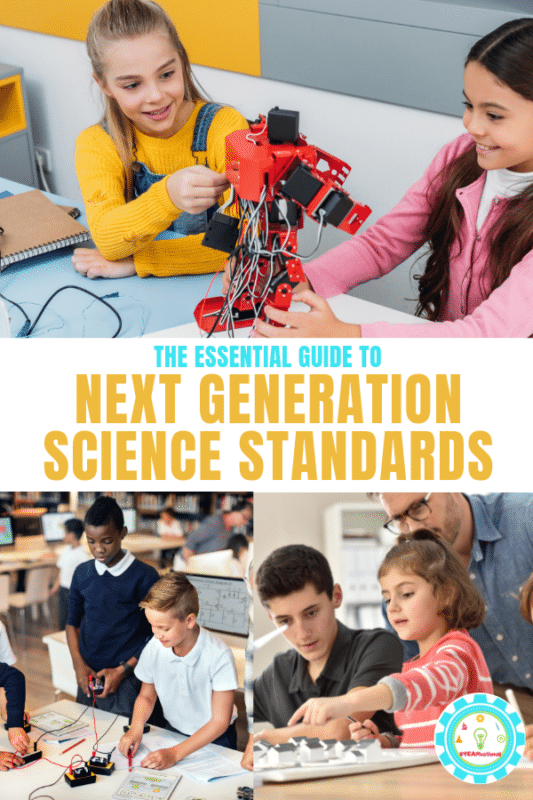
Next Generation Science Standards have been around since 2013, but there is still a lot of confusion on what the standards are and how to implement them. We take the mystey out of NGSS with our breakdown of the Next Generation Science Standards by grade level.
Find NGSS lesson plan ideas at the end of this explanation.
What are Next Generation Science Standards?
The Next Generation Science Standards were introduced in 2013 as a comprehensive framework for establishing a buildable science education that starts from kindergarten and builds on the same concepts from year to year.
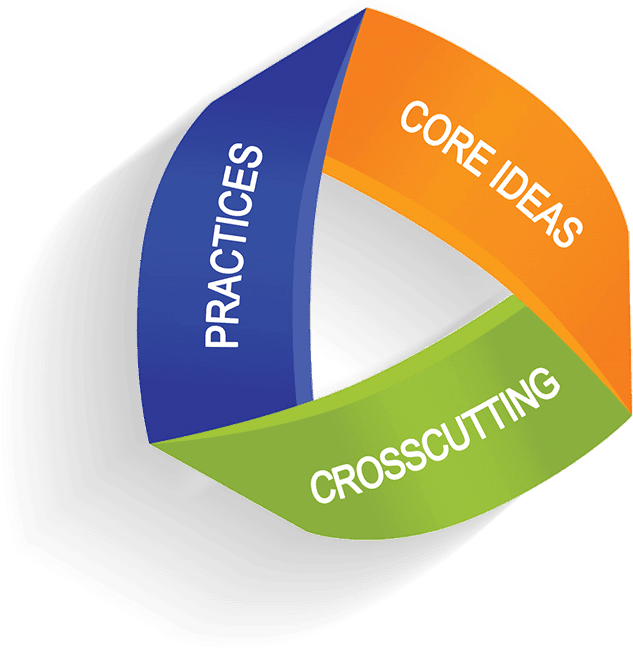
The basic idea behind Next Generation Science Standards is that each lesson contains core ideas, scientific practices, and crosscutting concepts so children learn science through a STEM lens- not just science experiments, but how to use science, technology, and engineering to solve real problems.
As early as Kindergarten, students are taught to explore science, the scientific method, how to conduct experiments, and the basic framework of how the world works.
From there, each year, additional depth is added to the lessons, so that by the end of high school, students leave the classroom with a strong understanding of modern science.
In the past, curriclum was mandated by the National Science Education Standards from the National Research Council (NRC) and Benchmarks for Science Literacy from the American Association for the Advancement of Science (AAAS) , but these benchmarks are based on an older understanding of science and technology that is over 20 years old.
NGSS replaces these standards with a modern understanding of science, technology, engineering, and math.
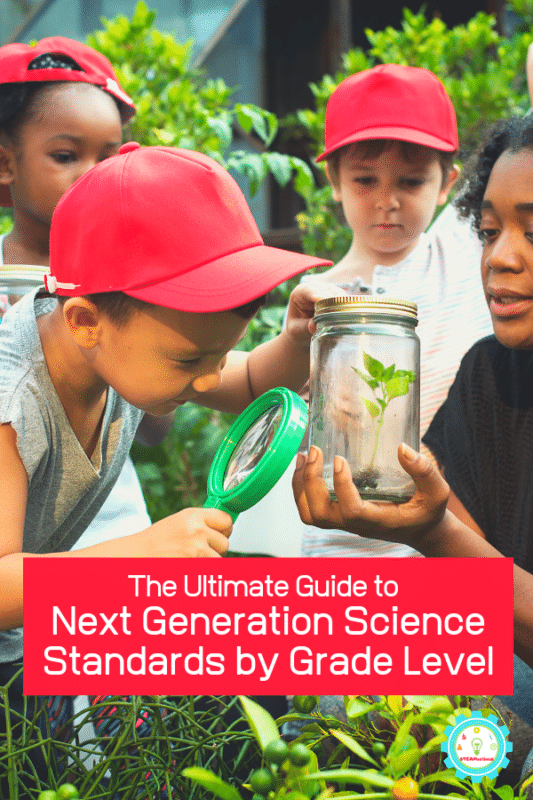
What are disciplinary core ideas in science?
A core idea is the central theme or idea behind a scientific concept. Each core idea contains 2-4 of the following concepts:
- It is important in multiple engineering and science disciplines or be the main idea behind a single science discipline.
- It provides a tool for solving problems or how to understand more complex ideas.
- It’s related to a student’s life experience or related to real world topics that require scientific or technical understanding.
- It can be taught over multiple grades at differnet levels of complexity as children mature.
What are scientific practices?
Scientific practices include engineering topics where math and technology tools are used to design solutions to real world problems.
Other standards focus on the scientific method, but NGSS adds another layer of problem solving. To be included in the NGSS scientific practice, questions must be answered and solved using design elements.
Next Generation Science Standards also focus heavily on solving problems in the real world, rather than just focusing on isolated or theoretical scientific concepts.
What are NGSS crosscutting concepts?
Science isn’t taught in a vacuum, and this is where crosscutting concepts come into play. Crosscutting concepts include things that bridge a single discipline, and have value outside of what is currently under investigation.
Crosscutting concepts could extend to other disciplines in science and engineering and there are also ELA crosscutting concepts included in NGSS as well. The basic NGSS crosscutting concepts include:
- Patterns
- Cause and Effect
- Scale
- Proportion
- Quantity
- Systems and System Models
- Energy and Matter
- Structure and Function
- Stability and Change
How is NGSS Different from Common Core State Standards for Literacy in Science?
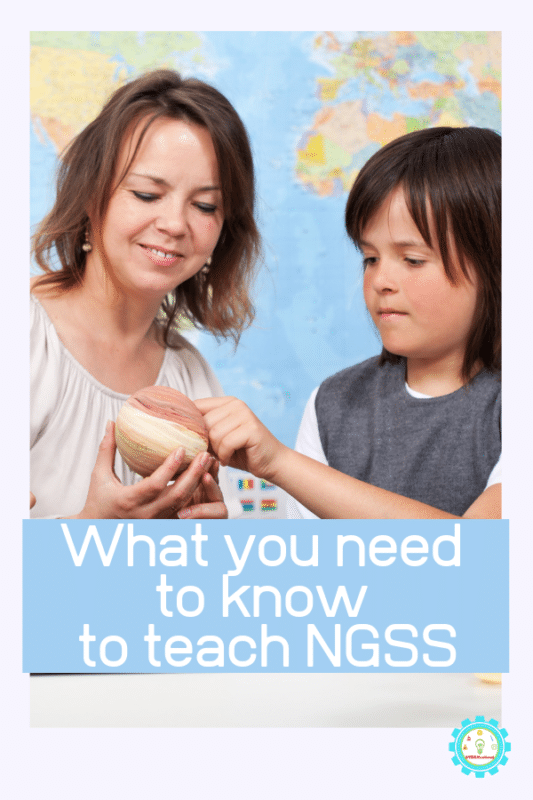
Common Core state standards were implemented in 2010 and come along with their own set of science standards know as The Common Core State Standards (CCSS) for Literacy in Science.
In k-5th grade, there are no specific standards for science specifically in Common Core- rather, the standards are included in literacy standards.
So, in 2013, the Next Generation Science Standards were introduced to act as a supplement to traditional common core and provide a buildable framework for science and STEM education from kindergarten through high school.
NGSS can be used alongside any other state standard program, and often provides a more in-depth framework for teaching science than most curriculum. Consequently, adding NGSS aligned curriclum to the classroom will often provide a deeper understanding of science than traditional curriculum.
Next Generation Science Standards by Grade Level
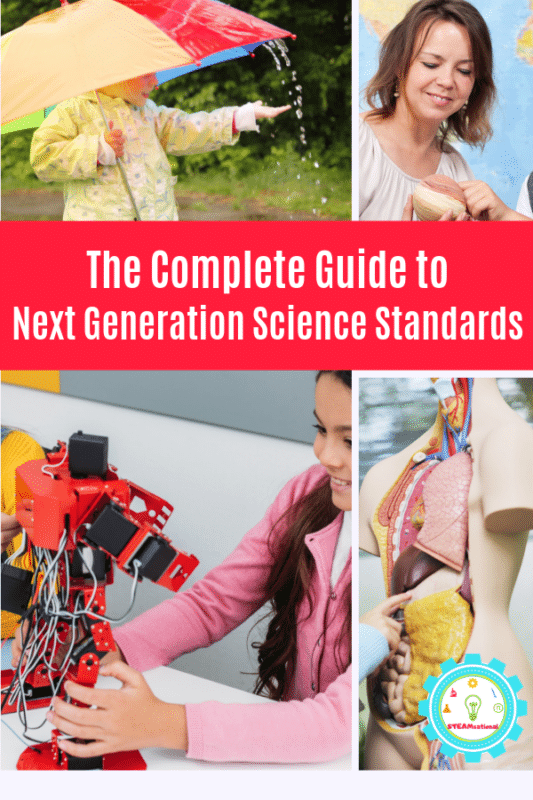
Below is a brief description of each of the NGSS benchmarks and learning objectives for each grade. You can read more in depth about these standards how to implement them on the NGSS website.
Next Generation Science Standards for Kindergarten
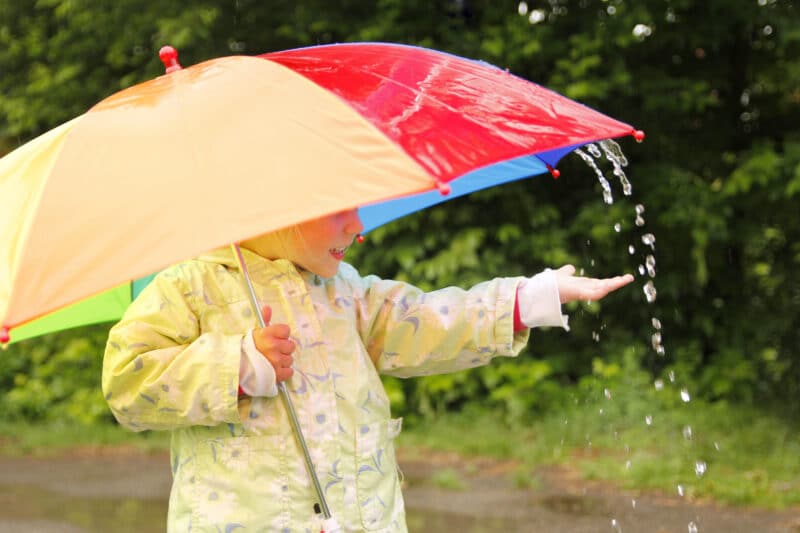
K-PS2 Motion and Stability: Forces and Interactions
K-PS3 Energy
K-LS1 From Molecules to Organisms: Structures and Processes
K-ESS2 Earth’s Systems
K-ESS3 Earth and Human Activity
K-2-ETS1 Engineering Design
View the expanded NGSS Kindergarten standards.
Next Generation Science Standards for 1st Grade
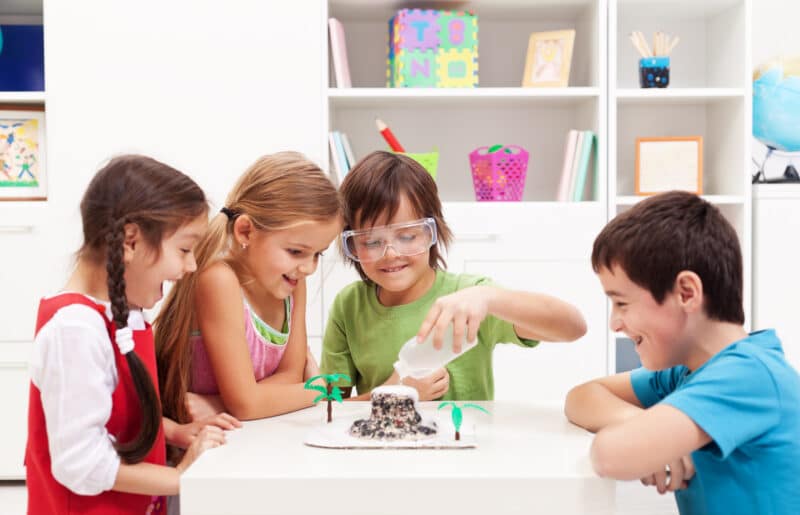
1-PS4 Waves and Their Applications in Technologies for Information Transfer
1-LS1 From Molecules to Organisms: Structures and Processes
1-LS3 Heredity: Inheritance and Variation of Traits
1-ESS1 Earth’s Place in the Universe
K-2-ETS1 Engineering Design
View the expanded NGSS first grade standards.
Next Generation Science Standards for 2nd Grade
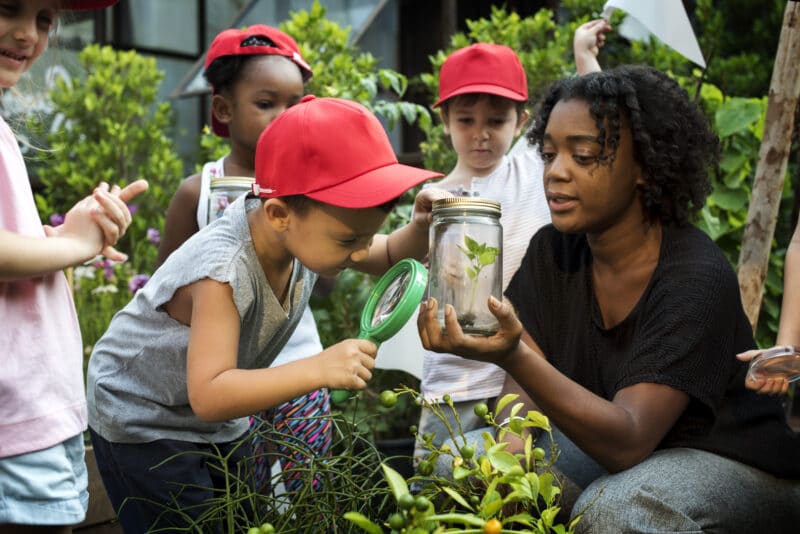
2-PS1-1 Matter and Its Interactions
Plan and conduct an investigation to describe and classify different kinds of materials by their observable properties.
2-PS1-2 Matter and Its Interactions
Analyze data obtained from testing different materials to determine which materials have the properties that are best suited for an intended purpose.
2-PS1-3 Matter and Its Interactions
Make observations to construct an evidence-based account of how an object made of a small set of pieces can be disassembled and made into a new object.
2-PS1-4 Matter and Its Interactions
Construct an argument with evidence that some changes caused by heating or cooling can be reversed and some cannot.
2-LS2-1 Ecosystems: Interactions, Energy, and Dynamics
Plan and conduct an investigation to determine if plants need sunlight and water to grow.
2-LS2-2 Ecosystems: Interactions, Energy, and Dynamics
Develop a simple model that mimics the function of an animal in dispersing seeds or pollinating plants.
2-LS4-1 Biological Evolution: Unity and Diversity
Make observations of plants and animals to compare the diversity of life in different habitats.
2-ESS1-1 Earth’s Place in the Universe
Use information from several sources to provide evidence that Earth events can occur quickly or slowly.
2-ESS2-1 Earth’s Systems
Compare multiple solutions designed to slow or prevent wind or water from changing the shape of the land.
2-ESS2-2 Earth’s Systems
Develop a model to represent the shapes and kinds of land and bodies of water in an area.
2-ESS2-3 Earth’s Systems
Obtain information to identify where water is found on Earth and that it can be solid or liquid.
K-2-ETS1-1 Engineering Design
Ask questions, make observations, and gather information about a situation people want to change to define a simple problem that can be solved through the development of a new or improved object or tool.
K-2-ETS1-2 Engineering Design
Develop a simple sketch, drawing, or physical model to illustrate how the shape of an object helps it function as needed to solve a given problem.
K-2-ETS1-3 Engineering Design
Analyze data from tests of two objects designed to solve the same problem to compare the strengths and weaknesses of how each performs.
Next Generation Science Standards for 3rd Grade
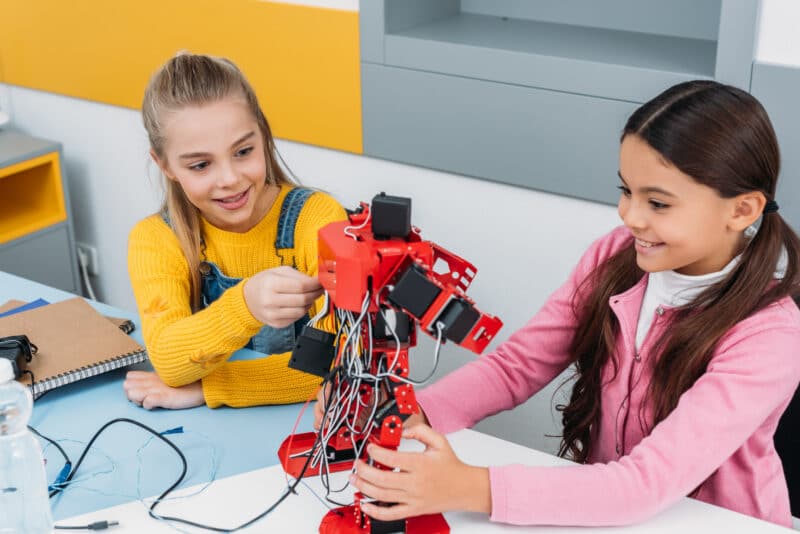
3-PS2-1 Motion and Stability: Forces and Interactions
Plan and conduct an investigation to provide evidence of the effects of balanced and unbalanced forces on the motion of an object.
3-PS2-2 Motion and Stability: Forces and Interactions
Make observations and/or measurements of an object’s motion to provide evidence that a pattern can be used to predict future motion.
3-PS2-3 Motion and Stability: Forces and Interactions
Ask questions to determine cause and effect relationships of electric or magnetic interactions between two objects not in contact with each other.
3-PS2-4 Motion and Stability: Forces and Interactions
Define a simple design problem that can be solved by applying scientific ideas about magnets.
3-LS1-1 From molecules to Organisms: Structures and Processes
Develop models to describe that organisms have unique and diverse life cycles but all have in common birth, growth, reproduction, and death.
3-LS2-1 Ecosystems: Interactions, Energy, and Dynamics
Construct an argument that some animals form groups that help members survive.
3-LS3-1 Heredity: Inheritance and Variation of Traits
Analyze and interpret data to provide evidence that plants and animals have traits inherited from parents and that variation of these traits exists in a group of similar organisms.
3-LS3-2 Heredity: Inheritance and Variation of Traits
Use evidence to support the explanation that traits can be influenced by the environment.
3-LS4-1 Biological Evolution: Unity and Diversity
Analyze and interpret data from fossils to provide evidence of the organisms and the environments in which they lived long ago.
3-LS4-2 Biological Evolution: Unity and Diversity
Use evidence to construct an explanation for how the variations in characteristics among individuals of the same species may provide advantages in surviving, finding mates, and reproducing.
3-LS4-3 Biological Evolution: Unity and Diversity
Construct an argument with evidence that in a particular habitat some organisms can survive well, some survive less well, and some cannot survive at all.
3-LS4-4 Biological Evolution: Unity and Diversity
Make a claim about the merit of a solution to a problem caused when the environment changes and the types of plants and animals that live there may change.
3-ESS2-1 Earth’s Systems
Represent data in tables and graphical displays to describe typical weather conditions expected during a particular season.
3-ESS2-2 Earth’s Systems
Obtain and combine information to describe climates in different regions of the world.
3-ESS3-1 Earth and Human Activity
Make a claim about the merit of a design solution that reduces the impacts of a weather-related hazard.
3-5-ETS1-1 Engineering Design
Define a simple design problem reflecting a need or a want that includes specified criteria for success and constraints on materials, time, or cost.
3-5-ETS1-2 Engineering Design
Generate and compare multiple possible solutions to a problem based on how well each is likely to meet the criteria and constraints of the problem.
3-5-ETS1-3 Engineering Design
Plan and carry out fair tests in which variables are controlled and failure points are considered to identify aspects of a model or prototype that can be improved.
Next Generation Science Standards for 4th Grade
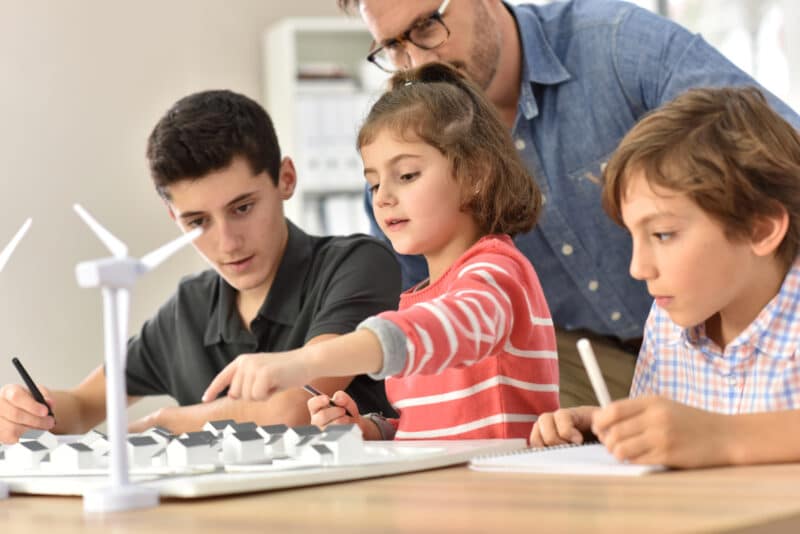
4-PS3-1 Energy
Use evidence to construct an explanation relating the speed of an object to the energy of that object.
4-PS3-2 Energy
Make observations to provide evidence that energy can be transferred from place to place by sound, light, heat, and electric currents.
4-PS3-3 Energy
Ask questions and predict outcomes about the changes in energy that occur when objects collide.
4-PS3-4 Energy
Apply scientific ideas to design, test, and refine a device that converts energy from one form to another.
4-PS4-1 Waves and Their Applications in Technologies for Information Transfer
Develop a model of waves to describe patterns in terms of amplitude and wavelength and that waves can cause objects to move.
4-PS4-2 Waves and Their Applications in Technologies for Information Transfer
Develop a model to describe that light reflecting from objects and entering the eye allows objects to be seen.
4-PS4-3 Waves and Their Applications in Technologies for Information Transfer
Generate and compare multiple solutions that use patterns to transfer information.
4-LS1-1 From Molecules to Organisms: Structures and Processes
Construct an argument that plants and animals have internal and external structures that function to support survival, growth, behavior, and reproduction.
4-LS1-2 From Molecules to Organisms: Structures and Processes
Use a model to describe that animals receive different types of information through their senses, process the information in their brain, and respond to the information in different ways.
4-ESS1-1 Earth’s Place in the Universe
Identify evidence from patterns in rock formations and fossils in rock layers to support an explanation for changes in a landscape over time.
4-ESS2-1 Earth’s Systems
Make observations and/or measurements to provide evidence of the effects of weathering or the rate of erosion by water, ice, wind, or vegetation.
4-ESS2-2 Earth’s Systems
Analyze and interpret data from maps to describe patterns of Earth’s features.
4-ESS3-1 Earth and Human Activity
Obtain and combine information to describe that energy and fuels are derived from natural resources and their uses affect the environment.
4-ESS3-2 Earth and Human Activity
Generate and compare multiple solutions to reduce the impacts of natural Earth processes on humans.
3-5-ETS1-1 Engineering Design
Define a simple design problem reflecting a need or a want that includes specified criteria for success and constraints on materials, time, or cost.
3-5-ETS1-2 Engineering Design
Generate and compare multiple possible solutions to a problem based on how well each is likely to meet the criteria and constraints of the problem.
3-5-ETS1-3 Engineering Design
Plan and carry out fair tests in which variables are controlled and failure points are considered to identify aspects of a model or prototype that can be improved.
Next Generation Science Standards for 5th Grade
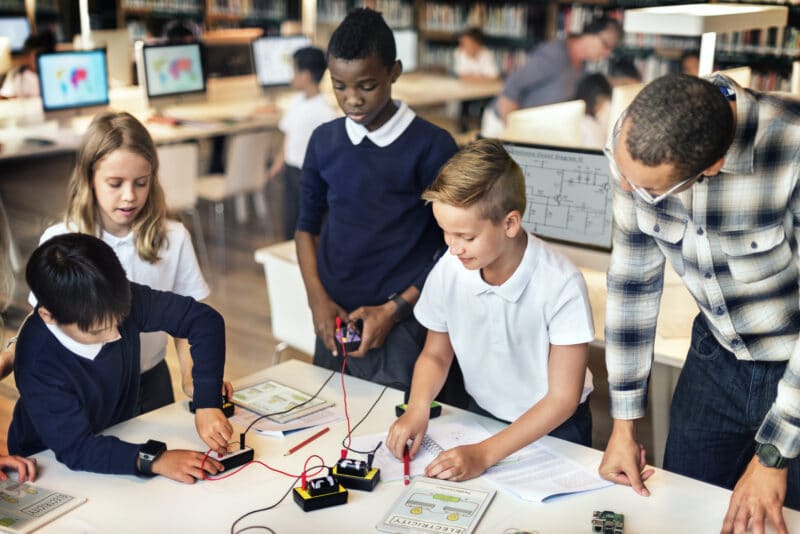
5-PS1-1 Matter and Its Interactions
Develop a model to describe that matter is made of particles too small to be seen.
5-PS1-2 Matter and Its Interactions
Measure and graph quantities to provide evidence that regardless of the type of change that occurs when heating, cooling, or mixing substances, the total weight of matter is conserved.
5-PS1-3 Matter and Its Interactions
Make observations and measurements to identify materials based on their properties.
5-PS1-4 Matter and Its Interactions
Conduct an investigation to determine whether the mixing of two or more substances results in new substances.
5-PS2-1 Motion and Stability: Forces and Interactions
Support an argument that the gravitational force exerted by Earth on objects is directed down.
5-PS3-1 Energy
Use models to describe that energy in animals’ food (used for body repair, growth, motion, and to maintain body warmth) was once energy from the sun.
5-LS1-1 From Molecules to Organisms: Structures and Processes
Support an argument that plants get the materials they need for growth chiefly from air and water.
5-LS2-1 Ecosystems: Interactions, Energy, and Dynamics
Develop a model to describe the movement of matter among plants, animals, decomposers, and the environment.
5-ESS1-1 Earth’s Place in the Universe
Support an argument that the apparent brightness of the sun and stars is due to their relative distances from the Earth.
5-ESS1-2 Earth’s Place in the Universe
Represent data in graphical displays to reveal patterns of daily changes in length and direction of shadows, day and night, and the seasonal appearance of some stars in the night sky.
5-ESS2-1 Earth’s Systems
Develop a model using an example to describe ways the geosphere, biosphere, hydrosphere, and/or atmosphere interact.
5-ESS2-2 Earth’s Systems
Describe and graph the amounts and percentages of water and fresh water in various reservoirs to provide evidence about the distribution of water on Earth.
5-ESS3-1 Earth and Human Activity
Obtain and combine information about ways individual communities use science ideas to protect the Earth’s resources and environment.
3-5-ETS1-1 Engineering Design
Define a simple design problem reflecting a need or a want that includes specified criteria for success and constraints on materials, time, or cost.
3-5-ETS1-2 Engineering Design
Generate and compare multiple possible solutions to a problem based on how well each is likely to meet the criteria and constraints of the problem.
3-5-ETS1-3 Engineering Design
Plan and carry out fair tests in which variables are controlled and failure points are considered to identify aspects of a model or prototype that can be improved.
Next Generation Science Standards for Middle School
MS-PS1 Matter and its Interactions
MS-PS2 Motion and Stability: Forces and Interactions
MS-PS3 Energy
MS-PS4 Waves and their Applications in Technologies for Information Transfer
MS-LS1 From Molecules to Organisms: Structures and Processes
MS-LS2 Ecosystems: Interactions, Energy, and Dynamics
MS-LS3 Heredity: Inheritance and Variation of Traits
MS-LS4 Biological Evolution: Unity and Diversity
MS-ESS1 Earth’s Place in the Universe
MS-ESS2 Earth’s Systems
MS-ESS3 Earth and Human Activity
MS-ETS1 Engineering Design
View the list of expanded NGSS middle school standards.
Next Generation Science Standards for High School
NGSS Lesson Plans
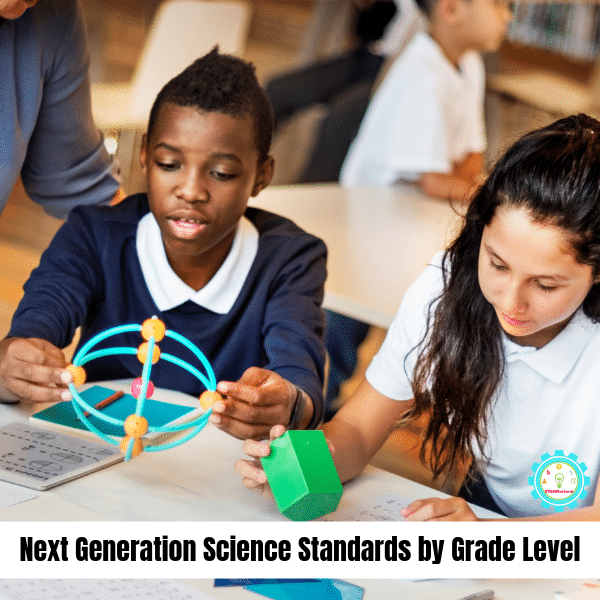
Explore our next generation science standards lesson plans below:
NGSS Lesson Plans for Kindergarten
NGSS Lesson Plans for First Grade
NGSS Lesson Plans for Second Grade
NGSS Lesson Plans for Third Grade
NGSS Lesson Plans for Fourth Grade
NGSS Lesson Plans for Fifth Grade
NGSS Lesson Plans for Middle School
